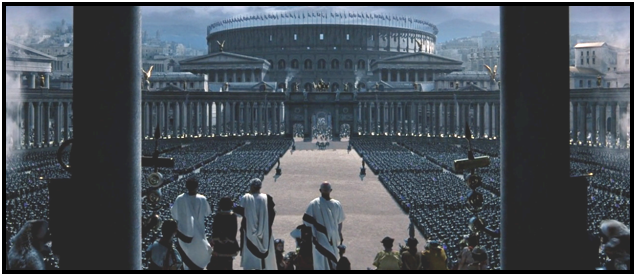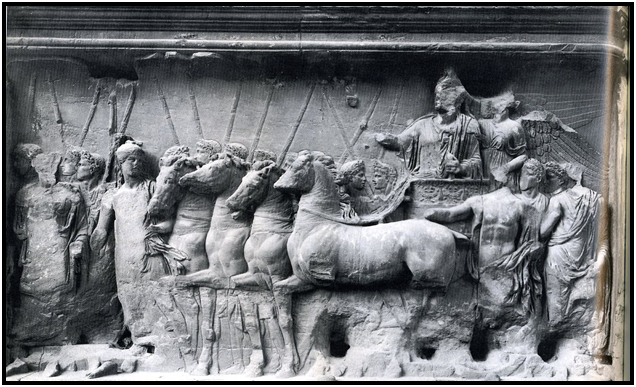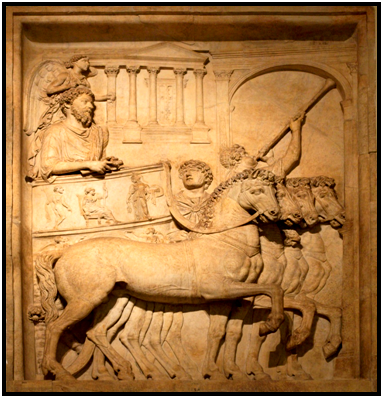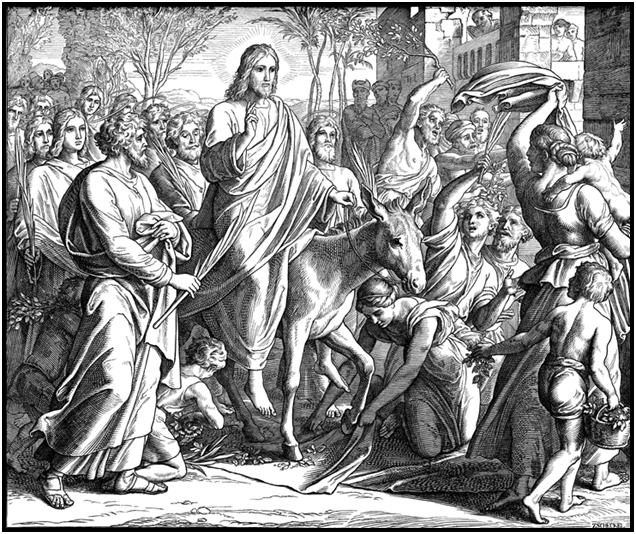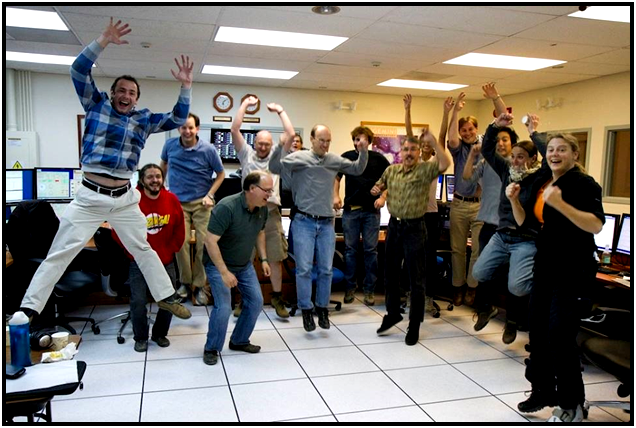A MOVEABLE FEAST
A Sermon by the Rev. Janet L. Abel
Preached on Pentecost Sunday, June 8, 2014
Happy Pentecost!
This is one of our three big church holidays. But does it really feel that way? Christmas and Easter and Pentecost. However, we really don’t do much for Pentecost. There’s a hint of red out there in the congregation. That’s one of the ways we say it’s Pentecost. No Pentecost trees, no Pentecost gifts, and that’s probably a good thing.
It’s a holiday weekend, but there’s no need to rush home and put the ham in the oven or make sure everything is decorated. Christmas is a lot of work. I love it. It’s my favorite time of the year, even though it’s work. And Easter is glorious, but once again there’s some effort involved, not to mention that we get up very early for the sunrise service.
I really enjoy Pentecost and what it celebrates. The Holy Spirit. As mysterious as that can be, this is a celebration. The church’s birthday is on this day. The people gathered together, and they became one. That is certainly something to celebrate. It is a Moveable Feast because the date changes every year. Some years we agree with the Orthodox churches, and this is one of those years when our Easter and Pentecost fall on the same days as theirs. So why does it move? We’ll be getting to that.
My Priest Has Never Told Me That!
A while ago, I worked with a lady who is a resident at St. Louise Manor, where I am on the staff. She tried out my Bible Study group that meets there on Thursday mornings. One day we got into a discussion about how Easter is fixed and why that date is so moveable. Christmas is always on December 25th, but it moves around the days of the week, although the date always remains the same.
You’ll notice, however, that there’s a huge spread in the different dates when Easter is celebrated. The dates can fall a month or more apart because of the way the specific date was decided long ago. Over the centuries, the church fathers have called enormous councils to decide important religious matters.
All right, then, this is orthodox; this is what we’re all going to believe. Because the dates are so spread out, and there’s no such thing as the printed word, we’re trying to get uniform dates down on paper. (They didn’t yet have printing presses.) People are disagreeing with each other. They’re running around in all directions. So we’re going to call these councils and get everybody on the same page.
One of those pages was to fix the date of Easter inasmuch as it was being celebrated all over the calendar. Some people were celebrating it every week, and that was just too much. But because Pentecost depends on Easter, how was Easter decided? The church fathers decided to place it on the first Sunday after the first full moon after the vernal equinox. This is a perfectly natural reason: To celebrate new life after the first day of spring.
Well, my lady, who still resides at the St. Louise Manor, didn’t enjoy hearing this. She took off her glasses and screeched, “My priest has never told me that! You’re lying!” And I said, “I’m so sorry I’m upsetting you, but this is the real reason. Have you ever thought about why Easter . . . .” “No, I’ve never thought! I don’t question God!” She was furious. I’ll never forget it. She hasn’t really spoken to me since, and it’s about three years now.
Some people have problems with their memory, but not this lady. Oh no. She’s the one who said Easter moves around. And it’s got to do with the first day of spring, which sounds like goddess worship or something. So she doesn’t come to Bible Study any more, as you can imagine. What does that say about her faith?
If it moves, it’s not stable, is it? It’s not believable. It’s too human. Yet I love the fact that the date of Pentecost moves. Pentecost is based on Easter, 50 days afterward. And because Easter moves, because spring moves, because the full moon moves, so does Pentecost. They all move around.
What Is Pentecost?
Let’s look at our Bible story a little more. What happened here? After Jesus ascends into heaven, the disciples are told to wait, and angels are there, looking up to heaven. There goes Jesus, now what do we do? The angels say, go back to Jerusalem and wait, and they did.
Ten days later, they’re all gathered together, and more people are obviously joining in. There are a lot of people here, men and women, including Mary, and certainly more than 12 disciples, or 11 in this case. There’s a multitude, the Bible says.
Then something major happened. Hard to describe, but the Bible uses words as though it were like wind, a mighty wind that filled the whole house. It was like fire, but not exactly, and it rested on each person. Everybody started to talk. The language was confused, but all understood that they were one. And there were many symbols. Wind and something like fire and words and languages from all over the earth, and yet there was understanding. These were all symbols of the Holy Spirit, and now the church could truly be born.
There are many images for God used all the time. A lot of them are from the Bible. Last Wednesday, reading from The Jewish Annotated New Testament, we looked at some central symbols used for God. “Handles” as Deb said in the children’s message, God’s big. You can get a handle on it, you can get a piece of it: Yahweh, Jehovah, Father, Mother, Abba, Breath, Spirit, Wind, Fire.
Also, the Holy Breath, Ruach in Hebrew, Wisdom from Proverbs. Holy Wisdom is pictured as being with God at the Creation. In John, the author picks up that thread in the prologue to his Gospel, which begins very differently from the other three Gospels: “In the beginning was the Word, and the Word was with God, and the Word was God.” Another image, the spoken word, and then John goes on to say that in Creation, God spoke, and the world began. These images are helpers. Somehow, God, one God, is understood and experienced in many different ways.
The Word Dwells Among Us, Filled with Wind and Fire
That’s what Pentecost celebrates. Then John says in his prologue, “And the Word became flesh and dwelt among us, filled with grace and truth.” These images are used in our Pentecost story in something like fire and words in a speech, different languages becoming one. Each image speaks a little differently about what the spirit is and how we might experience it. I’ve used wind a lot to talk about God’s spirit in and among us. Wind is something you don’t see, but it’s everywhere.
Have any of you ever gone on line to the Google Wind Map? Up comes an outline of the United States, showing all the winds, how strong they are, and colored lines that get brighter while they’re moving. It’s such a cool picture. You see why our Midwest has so many more problems with wind than we do here in the East. Nothing’s stopping that wind coming down from Canada, which is much stronger as shown by its patterns.
I looked at the Wind Map the day tornados were spinning in the Midwest, and you could see them. Go to the East, and we have much gentler winds blowing across New York State and the eastern seaboard. Look it up on a day of storm, and you’ll really see it. You can’t see wind, but you can certainly see what it does if you watch television news. You can see flags flapping; you can see trees and branches down and whole houses uprooted. It can get pretty powerful and sometimes scary, as in a storm at night.
God’s spirit can be like that. It can be like fire, warm to the touch, moving, passionate. And God’s spirit can certainly be like words. We use words a great deal in our church services whenever we gather. We read words in our books, we hear the Word, we sing, we pray. And notice the different languages becoming one. There are all these languages, Parthians and Medes, and yet they all understand. Understanding. Connection. And the Holy Spirit is everywhere. It’s moving all the time, which is why it’s great. Because Pentecost is a holiday that moves like Easter. New life moves too.
But what does that say about our faith? If it moves, are we like the lady at St. Louise? It’s not stable. It’s not believable. It’s too human.
My Theology Is Dangerous; the Holy Spirit Is in Too Many Places
A long time ago, I went to seminary. Not as long ago as Art, but we went to the same place, and I was there after him, ’92 to ’95. I decided right in the middle of the three-year Master’s program that I would take the Presbyterian ordination exam in my second year rather than the third year. Presbyterians have to take what they call ordination exams. I should have skipped to the UCC right then and there.
But of course the Presbyterians believe in tests, and they are very hard tests. They’re like the LSAT and the medical boards, so they’re similar to a board, a really difficult thing that must be passed. It’s not so much that it’s hard, but you have to kind of agree with the party line.
Despite not having been raised Presbyterian and thus not really indoctrinated in Presbyterian theology, I nevertheless decided to take my theological board a year early. So I took that test and guess what. The essay was about the Holy Spirit. Uh, oh. When I got it back, I have to tell you with some embarrassment that, although it was a great lesson, I had failed it.
I had never failed anything this important. But I failed logic in college; that was a big mystery to me. And some of my labs. I hated chem lab. Anyway, I failed the Presbyterian ordination exam and was shocked and chagrined. One’s ordination rides on this. I had a whole year more, but I sat on the steps just crushed.
And I have to tell you one of the quotes from my examiner. Presbyterian ordination exams are sent out across the country to various people who grade them. The Elder who reviewed my test had scrawled a big remark on the front: “Well, I am not passing this person. She puts the Spirit in way too many places, and her theology is dangerous.”
I never forgot that. I did install the Holy Spirit in too many places. I put it everywhere. (But the Holy Spirit did not face me down for my presumption.) What the Elder was looking for, however, was in the pulpit, in the Bible, in church, and that’s pretty much it.
You know you’re starting to get kind of dangerous if you think the Holy Spirit is just down the street. It could be anywhere then, right? In a bar, on a beach, in some other book besides the Bible. In some other office, in a song, in nature. How could the Spirit be there? You’re likely to get into dangerous places that way. Newton, New-Age philosophies, Paganism, you name it. So she doesn’t get ordained.
Luckily, I had a whole year to read a book called Christian Doctrine by Shirley Guthrie. It is a classic about Presbyterian theology. Since I was raised Baptist, I really needed to steep myself in what the examiners wanted to hear. And I passed with flying colors, I want you to know. My very next year, I took all the ordination exams together.
What was the Elder afraid of? What made my theology dangerous to him or her? What made this person seem like the lady at St. Louise who doesn’t want to hear that the Spirit could possibly move around, just like Pentecost and Easter. It’s unstable, unbelievable, and not human.
Theology Hardens, Gets Put in a Box
The history of the Jewish people is instructive. We learn early on in the Old Testament, in Genesis, that the Jews are worshipping all over the place. They set up rocks by a river, there by a stream called a wadi, maybe on a mountain because mountains remind people of God, so they go up there to worship. But then Moses comes along with the people, and they are being driven out of Egypt, out of bondage at last, to go to Israel.
On the way, Moses gets word that he is to build a tent to house the Ark of the Covenant. This is where the Jews are going to worship. The tent’s very fancy, all right, and there are a lot of instructions. I’ve read the Bible a couple of times and found lots of descriptions about the linens and stuff that must be in the tent. Now what is it about a tent? Is it in one place? No, you take it down, and you move it around. That’s how God’s sanctuaries started.
It was much later that the Temple was built, and that’s where God is. The Ark of the Covenant is like a throne where God rests, and that’s the holiest place within the Temple. The mountains where the Samaritans go? Well, they’re just plain wrong! How could God be there when Solomon built this beautiful Temple? It’s something you do, isn’t it?
When Christianity became legal in 313 A.D. and Emperor Constantine was converted, what happened to all those places where Christians were meeting with people who were so new they called themselves “The Way”? They were down there in the catacombs, in caves, in people’s houses. Baptismal fonts have been found in regular houses.
What happened to all those places? They were closed, right? Churches, big beautiful cathedrals were built. And that’s where God is.
Sorry, Canon’s Closed; the Age of Prophecy Is Over
It’s the same thing that happens to theology itself. Over many years, our thinking about God gets hardened, put in a box. Church councils have been part of that, we’ve got to agree. We must have one doctrine and one canon. We’re going to pick this Bible, this is the Holy Bible. This other stuff, well, does it make it into the Bible? Canon’s closed. That’s it. The Age of Prophecy is over, some have said. Is the canon closed?
Is there any other book, any book you’ve ever read that speaks to you about God or faith or soul in a real or profound way? Any person you’ve ever heard speak who has done the same thing for you? A piece of music that’s moved you and spoken to you of the Divine? Have you ever been out in nature?
We had a big church meeting in Niagara Falls, Canada, and it’s beautiful there. I remember once driving into Canada and feeling how arbitrary the border is between the United States and Canada. Someone put it there, though. Either it’s a river or a mountain range or something that’s fixed. Doesn’t move around. It’s human to do this, but things really do move.
Things are sometimes in very surprising places.
The Mighty Comma
One of my most fundamental reasons to become a UCC pastor is the comma. It’s simple and profound. We were quoting Gracie of Burns and Allen, and she said, “Never put a period where God has put a comma.” So I put on my big Comma pin this morning. Commas move around. They’re not stable. Not always. As Kim said in Bible Study, commas can save lives. You know, “Let’seatgrandma.” Or, Let’s eat, grandma.” We’re grateful for that.
Commas are very helpful, but sometimes we’re much more comfortable with periods. That was then. The Age of Prophecy is over. The canon is closed. But never put a period where God has put a comma. So we celebrate profoundly on the day we approach the mysterious movement and workings of the Holy Spirit. God is still speaking. God moves around. God is human and in us and among us, still at work in us and the world.
Pentecost is a Moveable Feast, as we are, as the church is, and may it ever be so.
Amen.




